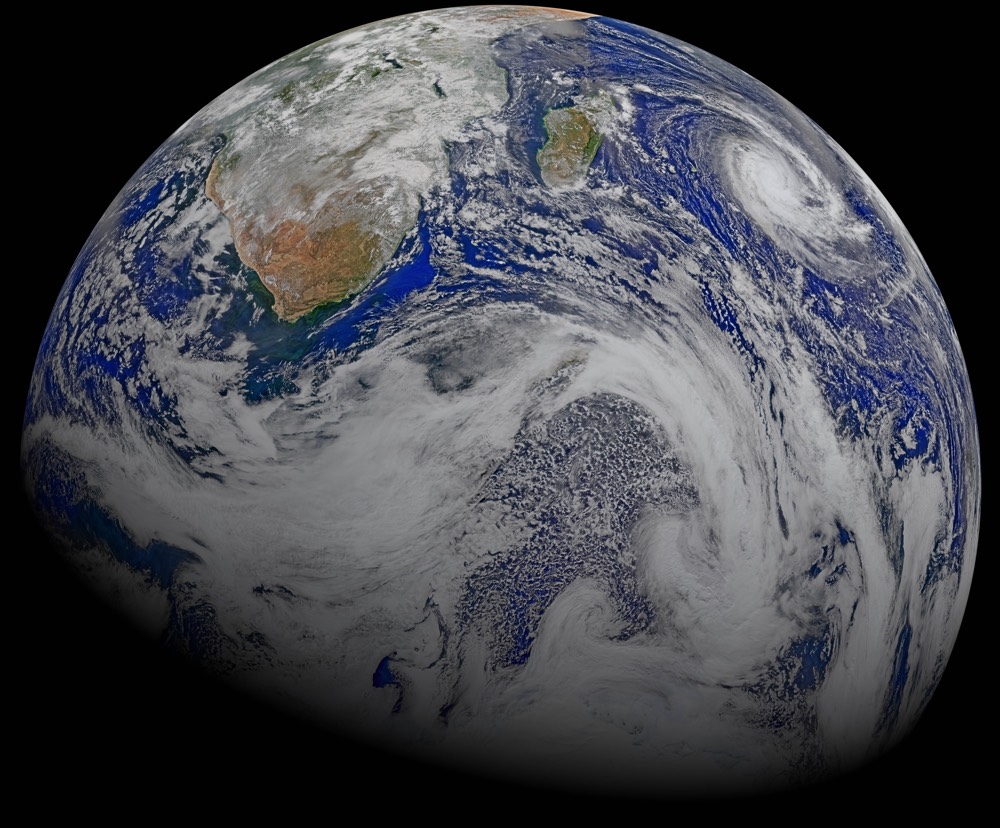Could a Limestone Sunshade Cool the Planet?

The idea of geoengineering a solution to climate change has been discussed for decades, and now a new study proposes a plan that would cool the planet while repairing a hole in the ozone layer at the same time.
The trick: using calcite particles injected high into the stratosphere to reflect sunlight back into space, according to the study by a group from Harvard University published Dec. 12 in the journal Proceedings of the National Academy of Sciences.
While scientists say geoengineering is not a substitute for cutting emissions of heat-trapping greenhouse gases, they say that more research is needed on geoengineering as a possible additional measure to help the planet.
"My view is that solar reengineering is a supplement, and in the end we still have to cut emissions," said David Keith, professor of applied physics and public policy at Harvard and author of the new paper.
"But cutting emissions doesn't cut the risk. A combination might to a better job."
Keith says that a lot more research is needed at some of the possible side effects of putting calcite, which is abundant in limestone, into the atmosphere. The study uses computer models to see possible effects of spraying small calcite particles about 12 to 15 miles above the Earth's surface in a region about 30 degrees north and south of the equator. That would cover most of the world's tropical forests and oceans.
RELATED: Earth Day, Plan B: Five Bold Geoengineering Plans
Sign up for the Live Science daily newsletter now
Get the world’s most fascinating discoveries delivered straight to your inbox.
The modeling also shows that the calcite dispersal would help protect against high-level ozone loss. The ozone layer helps protect the Earth from harmful solar radiation.
Figuring out the atmospheric chemistry without doing more damage is a bit tricky. Other researchers have proposed injecting sulfuric acid droplets into the atmosphere to reflect back sunlight, something that happens when volcanoes erupt and blanket the Earth with sulfuric acid, but that also hastens the destruction of the protective ozone layer.
Perhaps limestone is a better answer, Keith explained.
"Calcites scatter sunlight more or less the say way that acid droplets do, and they don't heat the lower stratosphere as much," Keith told Seeker. "The primary purpose is that they are a base and react with strong acids in the stratosphere — it makes salt, which would rain out. That would reverse the problem of the ozone hole."
Keith said that understanding the effects of a salty precipitation, or rain, on the Earth's oceans and soil, is another field of research.
"We can be certain there would be unintended consequences," Keith said. "What they would be nobody has looked at in a serious way because of this taboo against research."
Opponents say that spending more time and money on such an effort would divert attention from figuring out new forms of clean energy that don't emit as much carbon, and political efforts to cut carbon dioxide emissions from factories, cars and homes.
But some experts believe that an open discussion of geoengineering might open the door to people who espouse a more conservative, free-market philosophy and oppose additional federal climate regulations.
RELATED: Geoengineering Schemes Split Scientists
Dan Kahan, professor of law and psychology at Yale University, had volunteers from both political points of view examine the idea of geoengineering as a response to runaway climate change.
"That gesture [of proposing a technological fix to climate change] creates more trust," Kahan said. "It shows that scientists aren't just a front people for those who want to restrict business and industry."
Kahan said that it also sparks curiosity among both sides about the science of climate change itself.
"The kind of reaction that people have to climate change is very defensive," Kahan said. "But curiosity is the opposite. When you are curious, you want to know what somebody is trying to say. [Geoengineering] triggers a whole bunch of emotional reactions that neutralize or displace defensiveness."
Some conservative leaders, like New Gingrich, have in the past suggested geoengineering as a solution to climate change. However, president-elect Donald Trump said this weekend on Fox News that "nobody really knows" whether climate change is real. Trump's pick to head the Environmental Protection Agency, Oklahoma Attorney General Scott Pruitt, has written that the science behind climate change is "far from settled" and has sued the EPA to overturn rules to control carbon emissions.
Many climate scientists and environmental groups are waiting to see what direction Trump will take when it comes to climate policy and whether he will abide by the Paris climate accords that President Obama signed.
"We have a coherent scientific theory that has been developed over 100 years," Keith said. "If there is an alternative I'd like to hear it."
Original article on Seeker.









